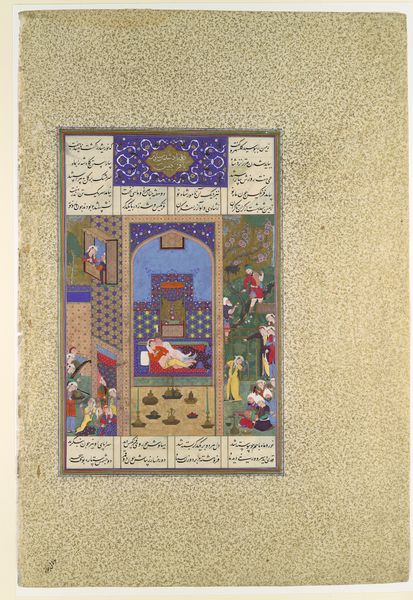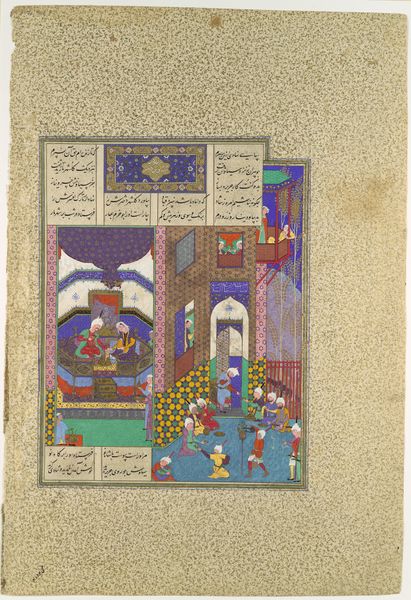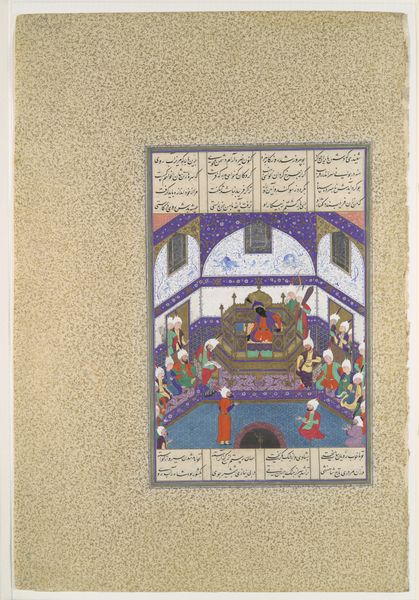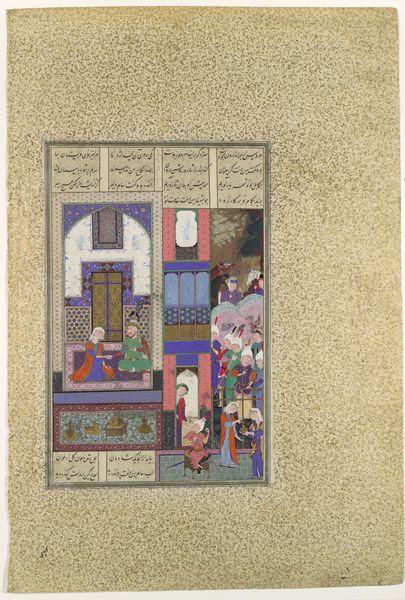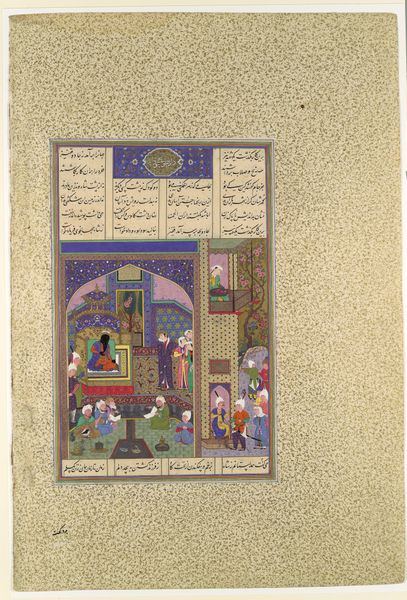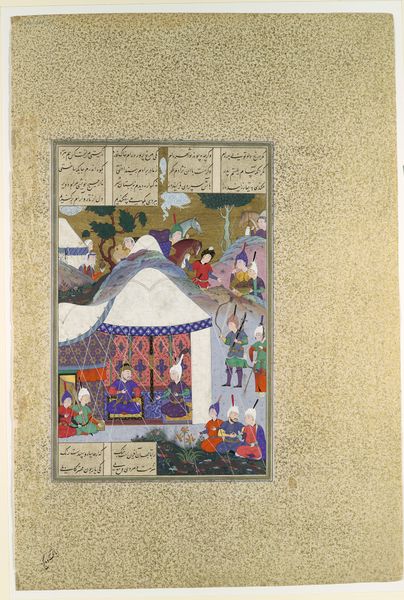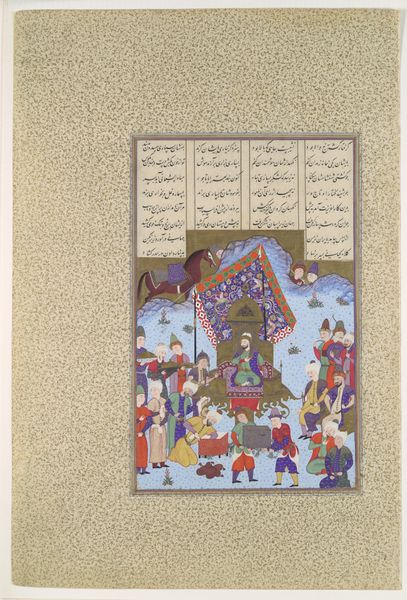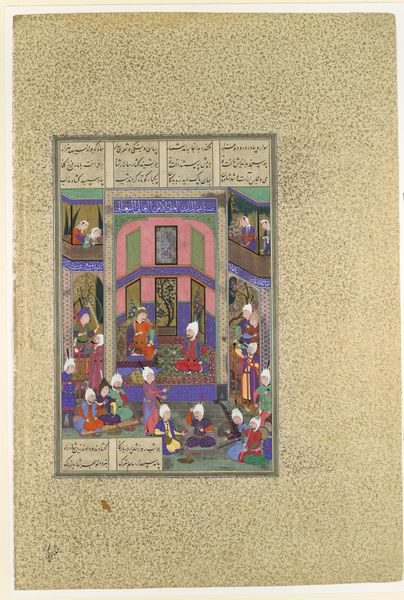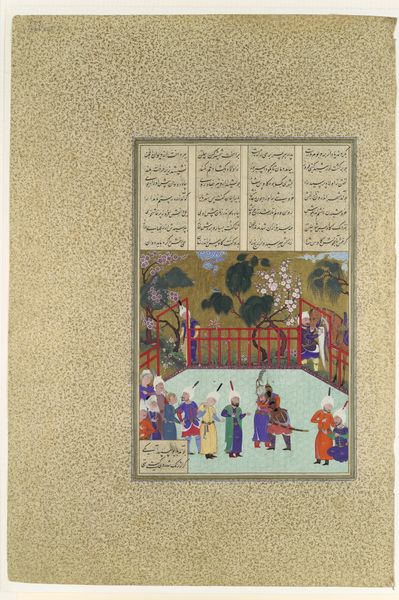
"The Iranians Mourn Farud and Jarira", Folio 236r from the Shahnama (Book of Kings) of Shah Tahmasp 1500 - 1555
0:00
0:00
#
narrative-art
#
death
#
horse
#
men
#
islamic-art
#
history-painting
#
miniature
Dimensions: Painting: H. 11 1/4 in. (28.6 cm) W. 7 5/16 in. (18.6 cm) Entire Page: H. 18 5/8 in. (47.3 cm) W. 12 1/2 in. (31.8 cm)
Copyright: Public Domain
Curator: Here we have, from the Metropolitan Museum’s collection, “The Iranians Mourn Farud and Jarira,” a folio from the Shahnameh, or Book of Kings, of Shah Tahmasp, dating from the 16th century. Editor: It’s hitting me hard, this sense of profound loss depicted here. A palette dominated by subdued blues and earthy tones contributes to this palpable feeling of grief… Who were Farud and Jarira, I wonder? Curator: Well, the Shahnameh is Iran's national epic, a retelling of its history mixed with mythology. Here, we're witnessing a tragic episode. Farud and Jarira were noble figures, betrayed and killed, hence this public display of mourning. Editor: And that deep sense of sorrow and betrayal really comes through, doesn't it? I see potent visual signifiers all over the image, almost like an iconography of lament. Note the body positioned centrally on the deathbed, which has connotations of ritual offering or sacrificial victim... The figures surrounding it each express a unique posture and gesture of bereavement. This isn’t just death; it’s a broken trust. Curator: I find it incredible how much emotion is distilled into such a small space, typical of Persian miniatures. Look at the detail in the patterning of the textiles. Even in grief, there's still this insistence on beauty, on order. That balance between pain and beauty is key to understanding the emotional range in Islamic art. Editor: Yes, the very act of illustrating such intense emotion hints at a culture trying to come to terms with such violent ruptures, giving shape to what's unnamable through intricate aesthetic rituals. The symbolism runs deep. Each colour, each gesture serves as both mourning and cultural continuity, defying erasure. Curator: That's a lovely observation about the defiance against erasure. And perhaps also an attempt to enshrine the dead in a visual culture that transcends the immediate horror. Editor: This piece leaves me pondering how communities and cultures construct narratives to navigate trauma and give form to enduring, shared cultural memory. Curator: For me, it underscores the timeless power of storytelling. To confront our history, celebrate heroism, and acknowledge even the most devastating human experiences.
Comments
No comments
Be the first to comment and join the conversation on the ultimate creative platform.

